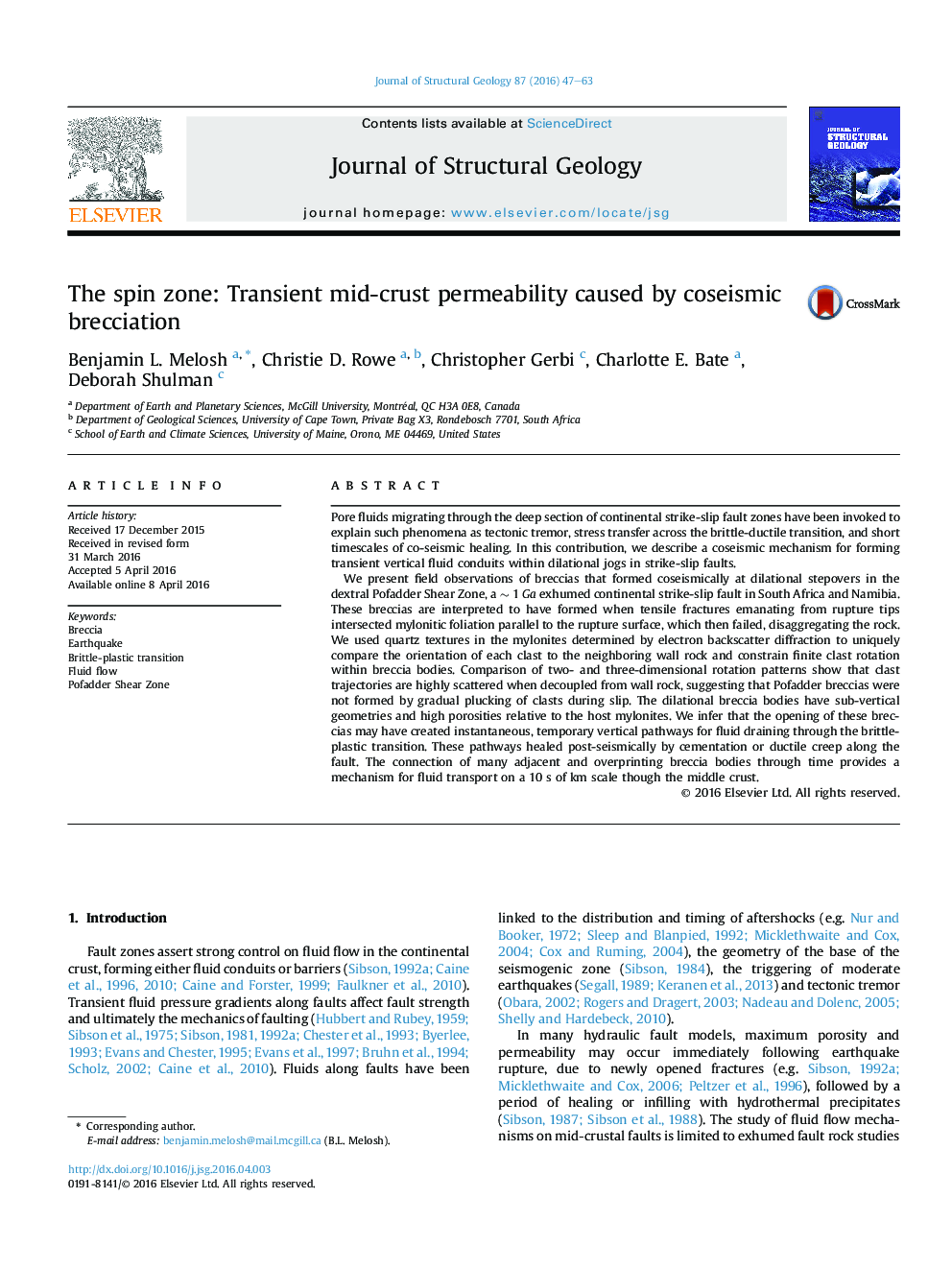| Article ID | Journal | Published Year | Pages | File Type |
|---|---|---|---|---|
| 6444680 | Journal of Structural Geology | 2016 | 17 Pages |
Abstract
We present field observations of breccias that formed coseismically at dilational stepovers in the dextral Pofadder Shear Zone, a â¼1Ga exhumed continental strike-slip fault in South Africa and Namibia. These breccias are interpreted to have formed when tensile fractures emanating from rupture tips intersected mylonitic foliation parallel to the rupture surface, which then failed, disaggregating the rock. We used quartz textures in the mylonites determined by electron backscatter diffraction to uniquely compare the orientation of each clast to the neighboring wall rock and constrain finite clast rotation within breccia bodies. Comparison of two- and three-dimensional rotation patterns show that clast trajectories are highly scattered when decoupled from wall rock, suggesting that Pofadder breccias were not formed by gradual plucking of clasts during slip. The dilational breccia bodies have sub-vertical geometries and high porosities relative to the host mylonites. We infer that the opening of these breccias may have created instantaneous, temporary vertical pathways for fluid draining through the brittle-plastic transition. These pathways healed post-seismically by cementation or ductile creep along the fault. The connection of many adjacent and overprinting breccia bodies through time provides a mechanism for fluid transport on a 10Â s of km scale though the middle crust.
Related Topics
Physical Sciences and Engineering
Earth and Planetary Sciences
Geology
Authors
Benjamin L. Melosh, Christie D. Rowe, Christopher Gerbi, Charlotte E. Bate, Deborah Shulman,
